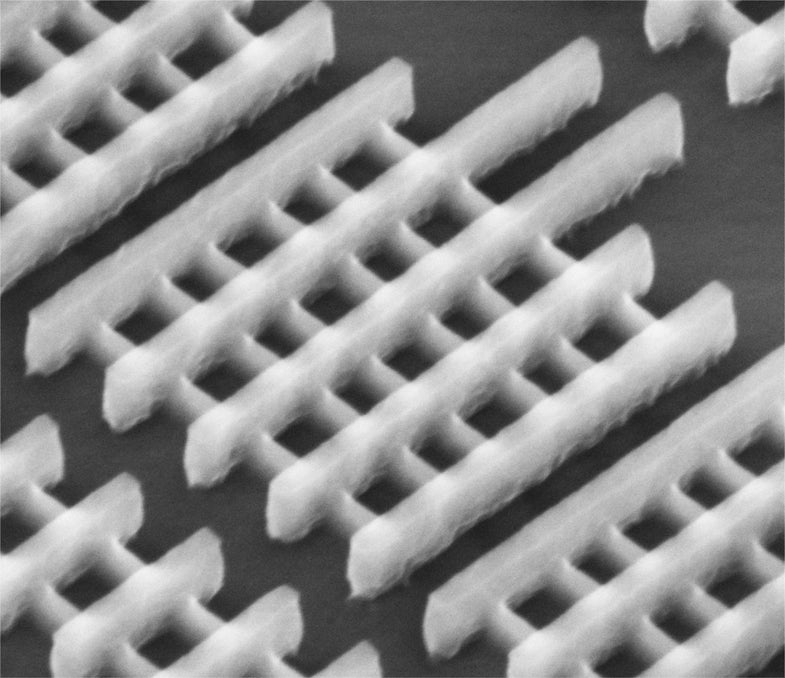Intel to Mass-Produce New 3-D Transistors for Faster, More Efficient Computer Chips
In a move that could remake the microchip industry, Intel announced Wednesday it will start mass-producing the first three-dimensional silicon...

In a move that could remake the microchip industry, Intel announced Wednesday it will start mass-producing the first three-dimensional silicon transistors. The 3-D transistor design, which Intel says will improve efficiency by more than one-third, will be integrated into a 22-nanometer node in an Intel chip called Ivy Bridge.
It’s a major change from the two-dimensional flat transistor structure we all know and love, which has powered every computer chip for the last 50 years. The 3-D switch design and the scale of its production will allow Moore’s Law to advance apace, Intel said.
Moore’s Law holds that the number of transistors that can be placed on a circuit will double every two years, but this places limits on the circuits’ size — a growing problem as engineers cram greater numbers of transistors onto ever-tinier chips. A 3-D switch could allow computer chips to be built like skyscrapers, optimizing space by building upward, and thereby allowing uninhibited transistor growth.
The Tri-Gate transistors consist of a thin 3-D silicon fin that arises vertically from the silicon substrate, Intel explains. Each fin has three gates, one on the top and one on each side, which allows for greater transistor current control. When it’s on, current flow is more efficient, and when the switches are off, the flow of electrons is closer to zero. By contrast, flat transistors have one gate, only on top.
All this leads to greater efficiency, allowing chips to operate at a lower voltage and with lower leakage — Intel claims a whopping 37 percent performance increase over its 2-D chips. Since the fins and their gates are vertical, more transistors can be packed close together. Eventually, designers will be able to make taller fins, aiming for even better performance.
“It will give product designers the flexibility to make current devices smarter and wholly new ones possible,” said Mark Bohr, a senior fellow at Intel.
More than 6 million 22-nm Tri-Gate transistors could fit inside the period at the end of this sentence, according to the company. (If you zoom in, who knows how many could fit!)
The new transistors will be integrated into Ivy Bridge-based Intel Core processors by the end of this year, which consumers will be able to get in 2012, Intel said.
Plenty of other chip designers have been talking about 3-D chips — just last month, we saw a 2-D reprogrammable one designed to behave as if it was a 3-D one. But Intel has taken it a step further by figuring out how to mass-produce them.
It’s technically 3-D because the switches are vertical and horizontal, but the transistors are not stacked, allowing electrons to flow in three dimensions — that’s a holy Grail of microprocessor design. But a new circuit design that allows more transistors on tinier spaces certainly sounds like a major breakthrough.
[IBM via PC Magazine]